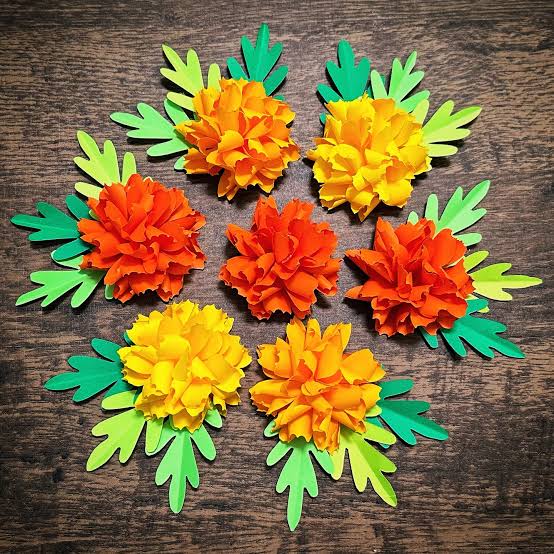Hibiscus flowers are famous for their vibrant colors, tropical charm, and ability to transform any garden or home space into a paradise. If you’ve ever wanted to grow, care for, or use hibiscus flowers without feeling overwhelmed, this guide will show you how to make it easy and enjoyable — whether you’re in the United States, United Kingdom, or Canada.From planting tips to care tricks and creative uses, here’s everything you need to know to embrace the beauty of hibiscus flowers.🌸 Introduction: Why Hibiscus Flowers Are SpecialHibiscus flowers are not just beautiful — they’re versatile. With large, trumpet-shaped blooms and colors ranging from deep red to soft pink, yellow, and white, these flowers instantly brighten any space.People grow hibiscus for:Aesthetic appeal: Their showy blooms make gardens and patios pop.Edible uses: Hibiscus petals are often used in teas, jams, and salads.Symbolism: Hibiscus flowers represent beauty, love, and delicate charm in many cultures.Whether you want a breathtaking garden plant, a potted tropical accent, or even a natural ingredient for drinks and crafts, hibiscus flowers are perfect for you.🌿 Step 1: Choosing the Right HibiscusThere are several types of hibiscus, but the two most common for home gardens are:Tropical Hibiscus (Hibiscus rosa-sinensis)Produces large, vibrant blooms.Thrives in warm climates (US zones 9–11).Needs protection indoors during cold months in cooler climates.Hardy Hibiscus (Hibiscus moscheutos)Can survive in colder regions (Canada and northern US).Blooms slightly later but produces larger flowers.Perfect for outdoor perennial gardens.💡 Tip: Choose your hibiscus variety based on your climate and gardening goals. Potted tropical hibiscus is great for patios and balconies, while hardy hibiscus works well in garden beds.🌼 Step 2: Planting Hibiscus FlowersPlanting hibiscus flowers is simple if you follow a few key steps:🌱 For Garden BedsChoose a sunny location — hibiscus flowers need at least 6 hours of sunlight daily.Prepare well-draining soil; mix in compost or organic fertilizer.Dig a hole twice as wide as the root ball and the same depth.Place the plant in the hole, backfill with soil, and water thoroughly.🪴 For ContainersUse a large pot with drainage holes.Fill with potting mix rich in organic matter.Plant your hibiscus and water well.Move indoors during winter if you’re in colder climates.💡 Tip: Hibiscus flowers love humidity. Mist them occasionally if your home or patio is dry.💧 Step 3: Caring for Hibiscus FlowersCaring for hibiscus flowers doesn’t have to be complicated. Follow these simple tricks:WateringKeep the soil consistently moist, but avoid waterlogging.Water deeply when the top inch of soil feels dry.FertilizingUse a balanced, slow-release fertilizer every 4–6 weeks during the growing season.Tropical hibiscus benefits from fertilizer high in potassium for bigger blooms.PruningPrune dead or weak stems to encourage new growth.Trim after the main blooming period for a bushier plant.Pest ControlWatch for aphids, spider mites, or whiteflies.Use insecticidal soap or neem oil for natural protection.💡 Pro Tip: Remove spent blooms regularly to encourage more flowers — hibiscus plants bloom more when dead flowers are pruned.🌺 Step 4: Creative Uses for Hibiscus FlowersHibiscus flowers aren’t just for looking pretty! Here are some fun ways to use them:🍵 Hibiscus TeaDry the petals and steep them in hot water for a tart, ruby-red herbal tea.Add honey or citrus for flavor.🥗 Culinary UsesFresh petals can be added to salads, desserts, or smoothies.Hibiscus syrup or jam is a delicious treat.🌸 Decor and CraftsUse fresh blooms in floral arrangements.Dry petals for potpourri or homemade soaps.💡 Tip: Always use edible varieties of hibiscus if consuming them.🌞 Step 5: Seasonal TipsSpring & Summer: Prime growing and blooming period. Fertilize and water regularly.Fall: Trim plants and prepare hardy hibiscus for winter.Winter: Protect tropical hibiscus from frost by bringing potted plants indoors.🌿 Bonus Tips for BeginnersStart with healthy nursery plants rather than seeds — they bloom faster.Rotate potted hibiscus occasionally to ensure even sunlight exposure.Use mulch in garden beds to retain moisture and reduce weeds.Avoid over-fertilizing — too much nitrogen promotes leaves instead of flowers.Take note of your plant’s bloom schedule to enjoy flowers year-round.🌺 Conclusion: Make Hibiscus Flowers Easy and BeautifulWith a little planning and care, you can make hibiscus flowers a highlight of your garden or home. From planting the right variety and providing proper care to exploring culinary and decorative uses, these flowers are versatile, colorful, and rewarding.Whether you want to brighten your patio with tropical blooms, create a hardy flower bed, or brew a refreshing hibiscus tea, following these simple steps ensures hibiscus flowers are easy to grow, care for, and enjoy.Turn your garden or balcony into a tropical paradise and watch your hibiscus flowers flourish beautifully! 🌺💚

